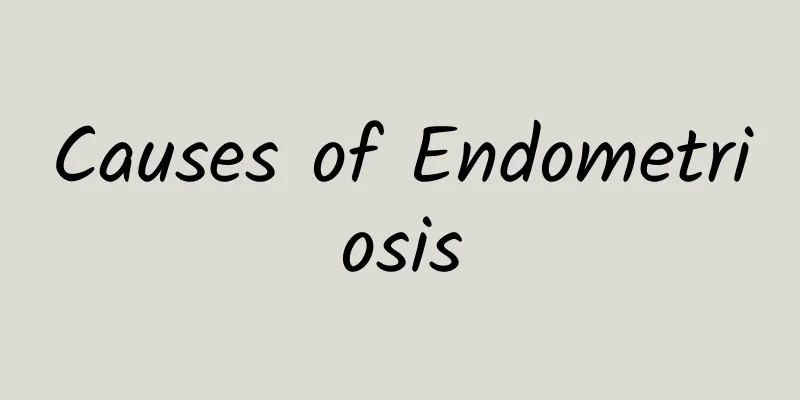Causes of Endometriosis

|
The causes of endometriosis may involve genetic factors, environmental influences, abnormal physiological mechanisms, and pathological changes. Understanding these possible causes of the disease will help with early prevention and targeted treatment. 1. Genetic factors Studies have shown that endometriosis has a certain family genetic tendency. If a direct relative such as a mother or sister has a history of endometriosis, a woman may have a higher risk of developing the disease. This may be related to certain gene variants, such as genes that affect the immune system or inflammatory response. Regular physical examinations and enhanced screening in high-risk groups are especially important for women with a family history. 2 External influence of environmental factors Certain chemicals in the environment may increase the risk of endometriosis, such as dioxins and endocrine disruptors. These substances may cause endometrial cell malformation by changing the body's hormonal balance or enhancing inflammatory responses. Occupational exposure, such as long-term work in high temperature or chemical production environments, is also a possible cause. Minimizing exposure to these potentially harmful substances and choosing a healthy lifestyle can effectively reduce the risk. 3 Physiological factors and their own mechanisms Retrograde menstruation is considered an important physiological factor of endometriosis. That is, during menstruation, endometrial tissue flows back to the pelvic cavity through the fallopian tubes instead of being discharged from the body with menstrual blood. These cells implant and proliferate in the pelvic cavity. Immune system dysfunction may cause the body to be unable to effectively remove these ectopic tissues, causing the disease to gradually develop. By maintaining a regular schedule and strengthening immunity, the risk of disease progression can be reduced to a certain extent. 4 Trauma or surgery induced Minimally invasive surgical issues in the reproductive tract may also be a trigger for the development of endometriosis. For example, cesarean sections or uterine fibroid surgery may transfer endometrial cells to abnormal locations, forming ectopic tissue. Choosing an experienced professional to perform the surgery and paying attention to postoperative follow-up can help reduce this risk. 5. Pathological changes and potential impact of diseases Abnormal hormone secretion, such as high estrogen levels, can promote the occurrence of endometriosis. Chronic pelvic infection, inflammation and other pathological changes may also become important factors in triggering endometrial cell ectopic. Scientific management of endocrine health and timely control of inflammation and related infections can effectively prevent the disease from worsening. Knowing the causes of endometriosis in a timely manner will help you take targeted preventive and treatment measures. If you experience symptoms such as abnormal menstruation, dysmenorrhea, or infertility, you should consult a gynecologist as soon as possible to develop a scientific diagnosis and treatment plan. This is the key to recovering your health as soon as possible. |
<<: Why does hydatidiform mole form?
>>: What medicine can cure endometritis and pelvic inflammatory disease quickly?
Recommend
Let's discuss what preparations should be made before abortion?
Abortion is not something you can do casually. Th...
How to regulate irregular menstruation after artificial abortion Why does artificial abortion lead to irregular menstruation
1. Causes of irregular menstruation after artific...
Introducing two causes of ovarian cysts
Do you want to know the causes of ovarian cysts? ...
Can I drink tea if I have pelvic inflammatory disease?
You can drink tea when you have pelvic inflammato...
What are the specific causes of ectopic pregnancy?
Many people want to have their own baby, but afte...
How long will it take for bleeding to occur after taking abortion pills? What abnormal reactions will occur after taking abortion pills?
Medical abortion is a type of artificial abortion...
What to eat is good for uterine fibroids. Uterine fibroids are most afraid of three kinds of exercise.
What to eat is good for uterine fibroids. Uterine...
Having trouble losing weight? The key to success: Get rid of the concept of "1 calorie is 1 calorie"!
I carefully calculated the calories of my food ev...
Is it dangerous for pregnant women with Bartholin's gland to give birth?
Bartholinitis is a chronic inflammation. It gener...
What are the harmful effects of abortion on women?
In today's life, abortion is a very common su...
Get rid of the title of elephant leg! Try 3 Lower Body Sculpting Exercises
【Sports Guide】 It is suitable for apple-shaped, b...
Care plan for threatened miscarriage
Threatened abortion is the most worrying problem ...
Doubt! Can chronic pelvic inflammatory disease be cured?
Can chronic pelvic inflammatory disease be cured?...
Symptoms of threatened miscarriage: pregnant women may have miscarriage if they have 3 abnormalities
Pregnant women's lower body bleeding is likel...
How to recover after abortion? 4 key maintenance measures
Nowadays, people are more open-minded. Many peopl...









